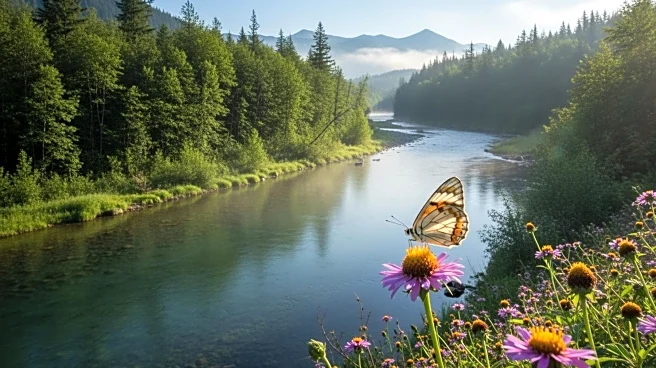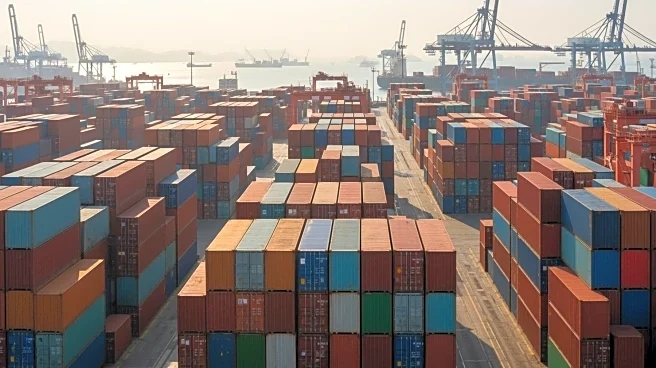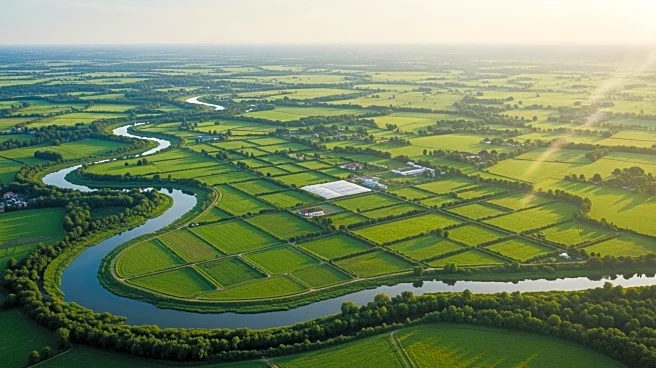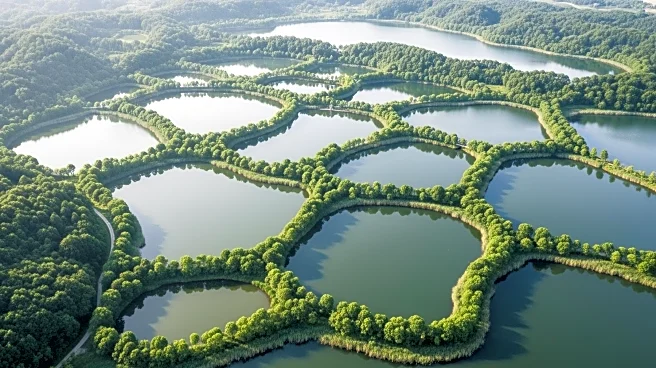What's Happening?
A study on the Three-River Source Region (TRSR) in China has revealed significant changes in land use and habitat quality over the past three decades. The region, which includes the sources of the Yangtze, Yellow, and Lancang rivers, has experienced a net
decline in habitat quality from 1990 to 2020. The study utilized ArcGIS tools to analyze land use changes, showing an increase in grassland and water bodies, while forest and unused lands decreased. The habitat quality index (HQI) showed a shift from higher to lower quality classes, with minimal-quality habitats reaching their lowest coverage. The study highlights the impact of urbanization, deforestation, and ecological conservation efforts on the region's land use dynamics.
Why It's Important?
The findings underscore the challenges of balancing development and conservation in ecologically sensitive areas. The decline in habitat quality could have significant implications for biodiversity and ecosystem services in the TRSR, which is a critical water source for millions of people. The study's insights into land use transitions can inform policy decisions aimed at sustainable development and environmental protection. The TRSR's experience may serve as a model for other regions facing similar pressures from urbanization and climate change.
What's Next?
The study projects continued changes in land use patterns through 2050, with further reductions in forested and undeveloped lands. Conservation measures will be crucial to mitigate habitat degradation and promote ecological restoration. Policymakers may need to implement stricter land use regulations and invest in conservation initiatives to preserve the region's ecological integrity. The study's projections can guide future land management strategies to ensure the sustainability of the TRSR's natural resources.
Beyond the Headlines
The TRSR's land use changes reflect broader global trends of habitat loss and environmental degradation. The study highlights the importance of integrating ecological considerations into land use planning and development policies. It also raises questions about the long-term sustainability of current land use practices and the need for innovative approaches to conservation. The TRSR's experience may offer lessons for other regions grappling with the impacts of human activity on natural ecosystems.













